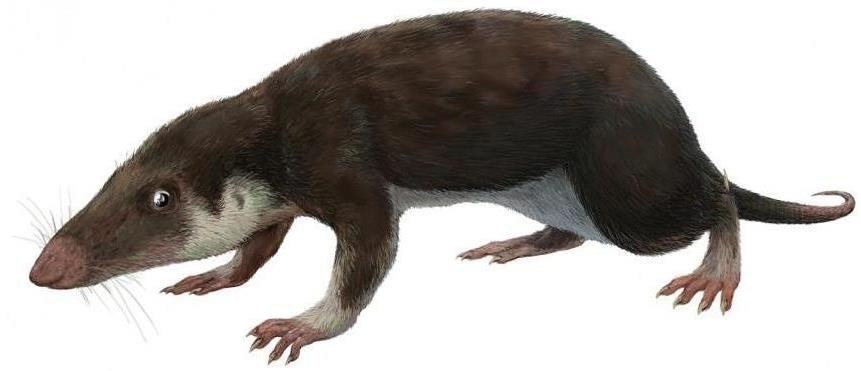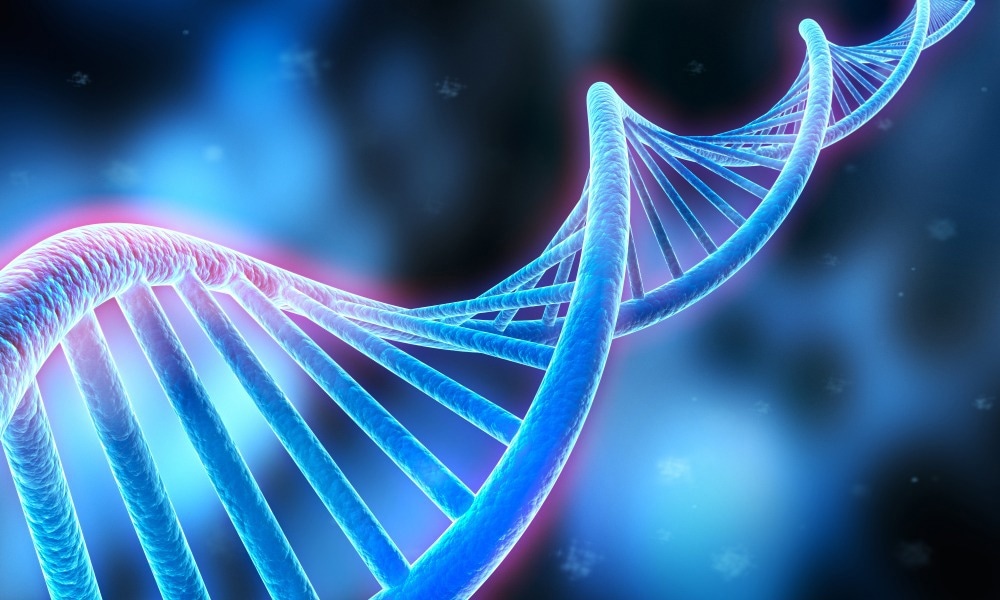From a platypus to a blue whale, all living mammals today are derived from a single ancestor that existed around 180 million years ago. Although nothing much is known about this species, an international team of experts has now computationally rebuilt how its DNA is organized.
 An international team has reconstructed the genome organization of the earliest common ancestor of all mammals. The reconstructed ancestral genome could help in understanding the evolution of mammals and in conservation of modern animals. The earliest mammal ancestor likely looked like this fossil animal, Morganucodon, which lived about 200 million years ago. Image Credit: Wikipedia by user Funkmonk, Creative Commons Attribution-Share Alike 3.0 Unported license
An international team has reconstructed the genome organization of the earliest common ancestor of all mammals. The reconstructed ancestral genome could help in understanding the evolution of mammals and in conservation of modern animals. The earliest mammal ancestor likely looked like this fossil animal, Morganucodon, which lived about 200 million years ago. Image Credit: Wikipedia by user Funkmonk, Creative Commons Attribution-Share Alike 3.0 Unported license
The study is released in Proceedings of the National Academy of Sciences on September 26th, 2022.
Our results have important implications for understanding the evolution of mammals and for conservation efforts.”
Harris Lewin, Study Senior Author and Distinguished Professor, Evolution and Ecology, University of California
High-quality genome sequences from 32 living species representing 23 of the 26 known orders of mammals were used by the researchers. They included chimpanzees, humans, wombats, domestic cattle, rhinos, bats, pangolins, and manatees.
The genomes of the chicken and Chinese alligator were also analyzed as comparison samples. The Earth BioGenome Project and other extensive biodiversity genome sequencing initiatives are producing some of these genomes. The Working Group for the Earth BioGenome Project is presided over by Lewin.

Image Credit: peterschreiber.media/Shutterstock.com
According to Joana Damas, first author of the study and a Postdoctoral Researcher at the UC Davis Genome Center, the reconstruction reveals that the mammal ancestor had 19 autosomal chromosomes, which regulate the inheritance of an organism’s traits aside from those governed by sex-linked chromosomes (these are paired in most cells, making 38 in total), plus two sex chromosomes.
In all 32 genomes, the scientists found 1,215 clusters of genes that always appear in the same order and on the same chromosome. Genes essential for the growth of a healthy embryo are found in these fundamental components of all mammal genomes, according to Damas.
Chromosomes stable over 300 million years
The researchers discovered nine whole chromosomes or chromosome fragments in the mammal ancestor whose gene arrangement is identical to that of contemporary birds.
Lewin added, “This remarkable finding shows the evolutionary stability of the order and orientation of genes on chromosomes over an extended evolutionary timeframe of more than 320 million years.”
The key drivers of genome evolution, breakages, rearrangements, and sequence duplication, were more likely to occur in the spaces between these conserved blocks, which contained more repetitive sequences.
Ancestral genome reconstructions are critical to interpreting where and why selective pressures vary across genomes. This study establishes a clear relationship between chromatin architecture, gene regulation, and linkage conservation.”
William Murphy, Professor, Texas A&M University
He further added, “This provides the foundation for assessing the role of natural selection in chromosome evolution across the mammalian tree of life.”
The ancestral chromosomes from the common ancestor could be traced by the researchers forward in time.
They discovered that there were variations in chromosomal rearrangement rates among mammal lineages. 66 million years ago, when an asteroid strike wiped off the dinosaurs and gave rise to mammals, there was an acceleration in rearrangement in the ruminant lineage, which gave rise to contemporary cattle, sheep, and deer.
According to the authors, the findings will aid in understanding the genetics underlying the adaptations that have allowed mammals to thrive in a changing world for the past 180 million years.
Source:
Journal reference:
Damas, J., et al. (2022). Evolution of the ancestral mammalian karyotype and syntenic regions. PNAS. doi.org/10.1073/pnas.2209139119